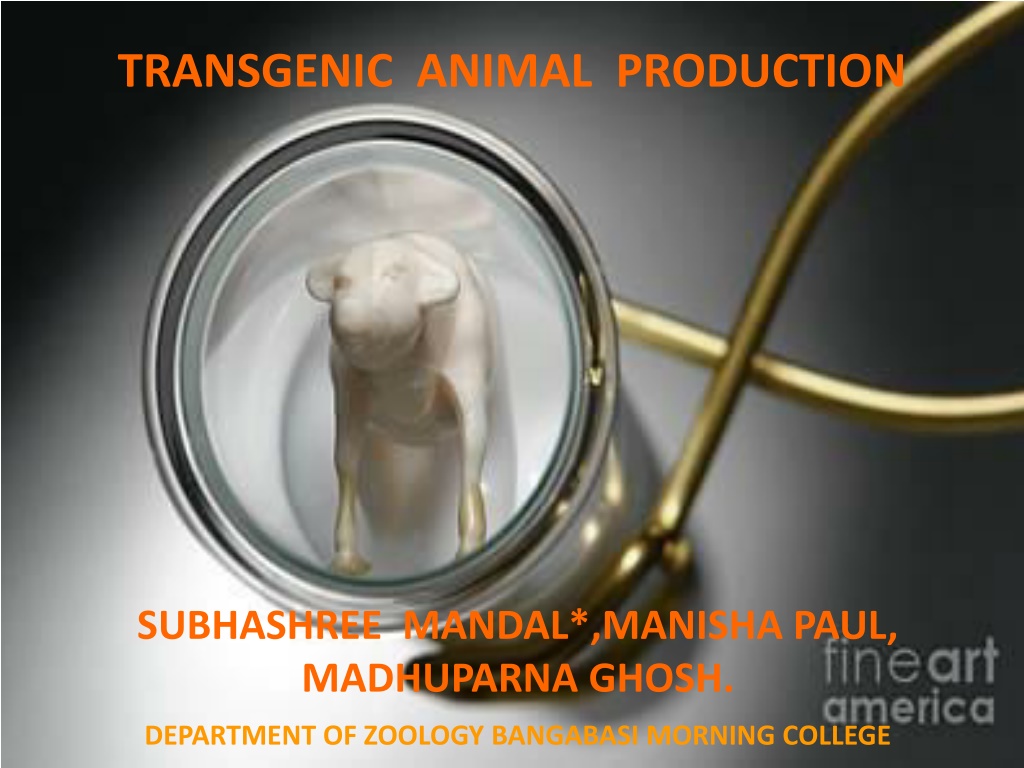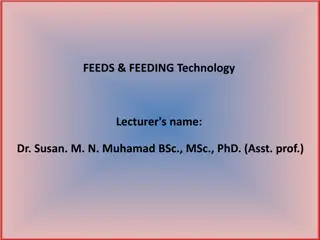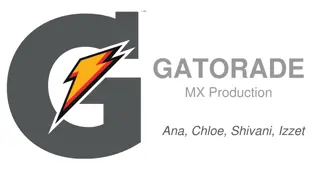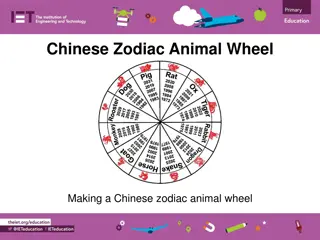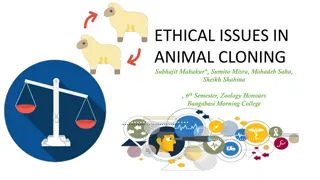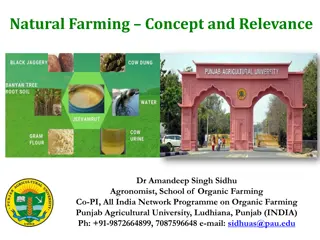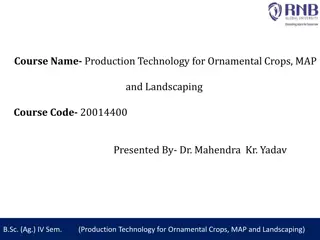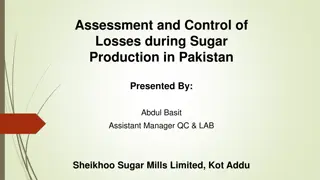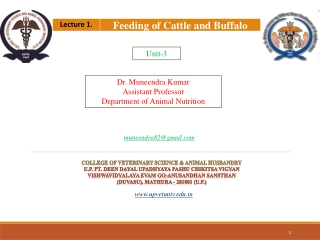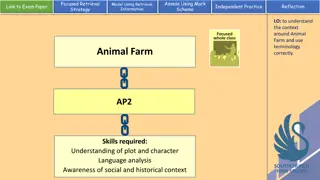Transgenic Animal Production
Transgenic animal production involves deliberate genetic modifications for improved traits. Methods like electroporation, lipofection, microinjection, and embryonic stem cell transfer are used. Benefits and drawbacks are discussed in detail.
Download Presentation
Please find below an Image/Link to download the presentation.
The content on the website is provided AS IS for your information and personal use only. It may not be sold, licensed, or shared on other websites without obtaining consent from the author. Download presentation by click this link. If you encounter any issues during the download, it is possible that the publisher has removed the file from their server.
Presentation Transcript
TRANSGENIC ANIMAL PRODUCTION SUBHASHREE MANDAL*,MANISHA PAUL, MADHUPARNA GHOSH. DEPARTMENT OF ZOOLOGY BANGABASI MORNING COLLEGE
INDEX INTRODUCTION DEFINATION GENE TRANSFER METHODS APPLICATIONS OF TRANSGENIC ANIMALS ADVANTAGES OF TRANSGENIC ANIMALS DISADVANTAGES OF TRANSGENIC ANIMALS CONCLUSION ACKNOWLEDGEMENT REFERANCES
INTRODUCTION In biotechnology conventional animals breeding methods have been in practice for better traits such as growth rate,milk production,supirior wool quality etc. Genetic engerriung offers novel technique is called transgenesis.one of first reports of transgenic animals were produced in 1981 by ralph brinster of university of pennsylvania palmiter of richard university at washington .they reduced introducing gene goir rat growth hormone.
DEFINITION The term transgenic animal refers to an animal in which there has been a deliberate modification of the genome - the material responsible for inherited characteristics - in contrast to spontaneous mutation (FELASA September 1992, revised February 1995).
GENE TRANSFER METHODS 1. Electroporation : It is modern method of the genetic engineering .It is based on the principal that electric pulse can induce cell membrane to fuse .This technique involves electric field mediated membrane permeabilization.
2. Lipofection : Liposomes are circular lipid molecules.It has an aqueous interior that can carry nucleic acids .The liposomes mediated gene transfer is known as Lipofection.
3. Microinjection : The microinjection technique introduces DNA into animal cells (eggs, oocytes, and embryos) or plant protoplasts using a micropipette. This technique is more appropriate for producing transgenic mice. This process involves incorporating DNA straight into the cytoplasm or nucleus.
4. Embryonic Stem Cell Mediated Gene Transfer : Cells from the inner cell mass of the blastocyst stage of a developing mouse embryo can proliferate in cell culture.These cells are known as embryonic stem cells They are capable of differentiating into other types of cells when transferred to another embryo.
EXAMPLES OF TRANSGENIC ANIMALS Transgenic sheep Sheep and goats are valuable livestock species that have been raised for their production of meat, milk, fiber, and other by-products. A transgenic fish is one that contains genes from another species. A transgenic fish is an improved variety of fish provided with one or more desirable foreign gene for the purpose of enhancing fish quality, growth, resistance and productivity. Transgenic fish
APPLICATION ON TRANSGENIC ANIMALS Transgenic mice in immunology. Transgenic mice in oncology. Transgenic mice as animal models of human disaeases. Transgenic mice as models for gene therapy. Transgenic mice as models for genetic engineering.
ADVANTAGES OF TRANSGENIC ANIMALS It is used in xenotransplantation in which transgenic pigs may provide the transplant of their organs to human. Traditional breeding of animals is a time consuming and diffucult task It is also an easy way for the farmers to increase their yields.
DISADVANTAGES OF TRANSGENIC ANIMALS mutagenesis and function disorders, ecological problems, antibiotic resistance, and population of clones. Transgenic animal project is extremely expensive. Transgenic foods have been produced and offer better productivity in terms of both yield and quantity.
CONCLUSION The term transgenic animal refers to an animal in which there has been a deliberate modification of the genome the material responsible for inherited characteristics in contrast to spontaneous mutation Transgenic animals provide a chance to produce animals that are a source of useful human therapeutic proteins like growth hormone, insulin, human lactoferrin, etc. Transgenic animals can be easily produced by transforming stem cells, growing in vitro, with the desired gene constructed by homologous recombination.
ACKNOWLEDGEMENT We would like to express our gratitude towards our teacher Dr.Sreejata Biswas ma'am who gave us the golden opportunity to do this wonderful presentation on Transgenic animal production. Thank you ma'am for your constant support and guidance. We are also grateful to our principal sir for giving us such a golden opportunity to perform this presentation. Last but not the least, we would like to thank our fellow batchmates , group members and our family members for their constant support.
REFERENCES Devlin, R. H. et al. Extraordinary salmon growth [7]. Nature 371, 209-210 (1994). Donovan, D. M. et al. Engineering disease resistant cattle. Transgenic Research 14, 563-567 (2005). Pursel, V. G. et al. Genetic engineering of livestock. Science 244, 1281-1288 (1989).
